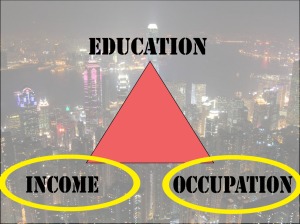Normally, linguists analyze language death on a societal basis, but we propose that such process also occurs within a minority community in a foreign context. As the prevalent language dominates minorities’ choice of language, they may neglect linguistic practices of their culture. Whatever reason of such switch maybe, this preference of dominant language over the ethnic language would ultimately lead to its decline within a minority community.
Born in Pakistan and raised in Hong Kong, Noman and Sehrish both belong to South Asian minority groups in the local community. They are proficient in Cantonese and English, but are less competent in Urdu, their native language. Previously, we described the ascension of socioeconomic status, the jeopardized cultural continuity and discrimination with the use of Urdu and Cantonese as a ethnic minority in Hong Kong. While the above are factual and relatively straightforward experience to comprehend, during our interview about the experience as ethnic minorities in Hong Kong, we uncovered a more complex layer of emotions and sentiments with their ever-growing and insufficient exposure to Cantonese and Urdu respectively.
Whereas Sehrish remained frustrated in her efforts to explain Pakistani traditions to her peers, Noman, who is also less competent in Urdu, expressed a growing sense of exasperation while communicating his thoughts and opinion to his parents. To further complicating matters, neither of them speaks Cantonese nor English. In turn, this has severely weakened family ties in Noman’s household. Raised in a dissimilar environment to that of his parents, he was unappreciative of their traditions and cultural norms, particularly to the concept of gender conformity. Disgruntled, he described how his parents remain rooted in the idea of gender conservatism – education opportunities for female members of the family are not as readily available as what he currently enjoys. In the past, conflicts had arisen from Noman’s disapproval and his parents’ acknowledge of Pakistani culture. Attributing his open-mindedness to the exposure to Cantonese, he sees this originally foreign, but now familiar language as a gateway to introduce modern and more equitable perspectives, unlike that of his ethnic culture, on important gender issues. Similar to what Boroditsky predicted, Noman’s experience with Cantonese influenced his interpretation of ethnic and global cultures. But perhaps, this has also, at the same time, hindered and possibly, undermined Noman’s personal understanding to the Pakistani culture.
Although Noman continues to dismiss the Pakistani conservatism and certain parts of its traditions, he is sentimental for straining family ties with his incompetence in Urdu. Having never received a proper education on Urdu, he expressed regret on his inability to converse fluently in the language and highlighted that it has inadvertently affected the family relationship and his perception on Pakistani norms.










